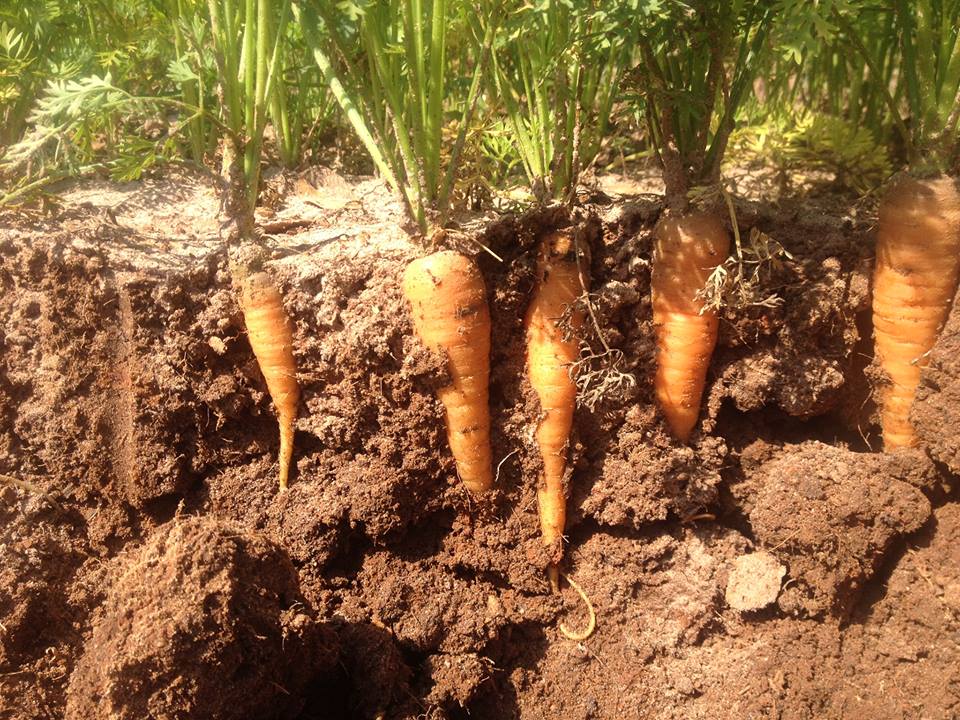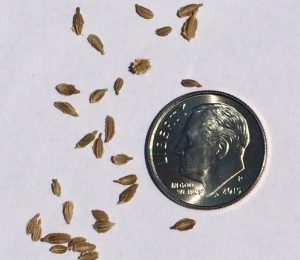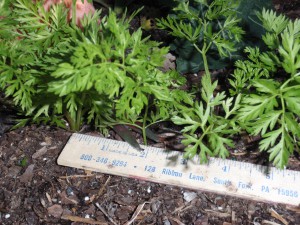
Carrots need enough space so as not to compete for light, nutrients, or moisture. Photo by Full Earth Farm.
Of all the garden veggies, carrots are very close to the top of my list of favorites to grow. They can be directly seeded into the garden, need no pruning or staking, can hold up magnificently in the cold, have few pest problems, are easy to harvest, can be eaten raw or cooked, and they are, of course, delicious.
Carrots are in the Apiaceae, or umbel family, along with cilantro, celery, fennel, parsley, and dill. Flowers in the umbel family grow as short flower stalks which spread from one point, like that of an upside-down umbrella, hence their name. If the carrot root is not harvested, the plant will produce beautiful umbrella-like inflorescences the following year, as carrots are biennial.
When planting carrots, there are some important aspects to keep in mind. Here in Florida, carrots thrive in our cool season. They prefer soil temperatures to be less than 80°F for good germination and air temperatures below 75°F for best growth. Therefore, waiting until mid-September through October to seed will yield better germination and growth.
One of the biggest mistakes one can make in the garden is neglecting to thin seedlings. And carrots – whose seeds are a mere millimeter in length – are one of the prime culprits.
An individual carrot needs one to three inches of soil space, depending on the variety, to grow to full maturity and not compete for light, nutrients, or moisture. This, however, does not mean that you must only plant one carrot seed per one to three inches. In fact, carrots should be seeded one-half inch apart, especially when day temperatures are above 75°F, as you may have spotty germination. But the key is proper thinning. Carrots take between seven to 21 days to germinate, so be sure to give them time, and be sure to keep the area consistently moist, but not water-logged.
Once germinated, it is crucial to make your first thinning. Find the seedlings that are less than an inch apart and simply cut their stems at the soil line using either a sharp fingernail or garden sheers. Depending on the variety of carrot and seeding density, you may need to make another thinning to ensure the carrots have enough room to prosper.
I know it can be emotionally challenging to remove growing seedlings from your garden – but remember – it’s for the greater carrot good!
- Dung Beetles of the Florida Panhandle - June 26, 2025
- Summer Veggies That Can Take The Heat - May 15, 2025
- Stopping Tomato Blossom-End Rot Before It Starts - April 3, 2025


